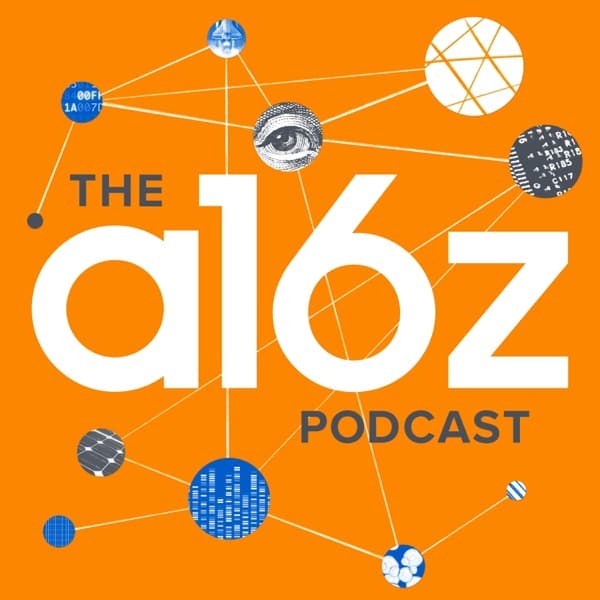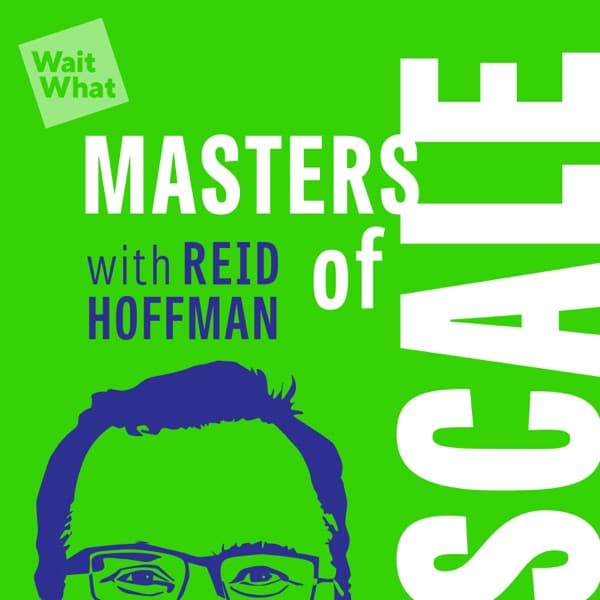This Week in Startups: AI models use web data without permission, creating opportunities for startups to provide curated data services.
Fireship: Anthropic released Claude 3.7, a powerful language model with new features for programming and a CLI tool called Claude Code.
a16z Podcast: The discussion explores the evolving role of AI in creative industries, emphasizing the shift from skill to taste as a differentiator and the potential of AI to enhance creative workflows.
Masters of Scale: Vital Farms CEO discusses the company's resilience during eggflation and avian flu, emphasizing trust, transparency, and sustainable practices.
TechCrunch Startup News: Arise AI offers an observability platform for AI models, helping companies monitor and evaluate AI applications for errors and issues.
TechCrunch Startup News: Capella University's FlexPath offers flexible learning, while the U.S. energy transition sees record investment but rising carbon emissions.
This Week in Startups - Journalists are Training Robots!
AI models are collecting data from the web without explicit permission, which opens up opportunities for startups to leverage subject matter experts to gather and curate information. These experts can use various methods, such as scraping or manual input, to compile data. Companies like Outlier offer services that involve human editors to assist in training AI models, a process known as reinforcement learning with human feedback (RLHF). This approach is similar to traditional editorial work and is increasingly being filled by former journalists, offering flexible work-from-home opportunities.
Key Points:
- AI models use web data without permission, creating legal and ethical challenges.
- Startups can capitalize by providing curated data services using subject matter experts.
- Companies like Outlier offer human editing services to improve AI training.
- Reinforcement learning with human feedback (RLHF) is a key method in AI training.
- Former journalists are finding new roles in AI data curation, often working remotely.
Details:
1. 📊 Data Collection by AI Models
- AI models collect vast amounts of data from the open web without explicit user consent or notification, posing ethical concerns.
- The lack of consent in data collection processes raises significant privacy issues and potential legal challenges.
- To address these concerns, implementing transparent data collection policies and obtaining user consent are critical steps.
- Exploring case studies where data collection practices have led to privacy violations can provide valuable insights.
- Establishing clear guidelines and regulations for AI data collection can help mitigate ethical and legal risks.
2. 🔍 Opportunities for Startups with Experts
2.1. Engaging Experts for Competitive Advantage
2.2. Finding and Collaborating with Experts
3. 🧠 Methods of Information Gathering
- Information gathering methods on the web include scraping, manual writing, and consulting subject matter experts, each with its own advantages and limitations.
- Organizations must ensure information is gathered ethically, adhering to legal standards to maintain credibility and trust.
- A clear understanding of the source and method used is crucial for assessing data reliability and validity.
- Example: Web scraping can automate data collection but requires careful adherence to legal restrictions to avoid misuse.
- Using subject matter experts ensures accuracy but may be more time-consuming and costly.
- Implementing robust policies and guidelines can help organizations navigate ethical and legal challenges in information gathering.
4. 🤝 Indemnification and Data Acquisition
4.1. Indemnification Process
4.2. Data Acquisition Strategies
5. ✍️ Role of Human Editors in AI Training
- The inclusion of human editors in AI training processes is gaining traction among companies, highlighting the importance of human oversight in machine learning.
- Companies like Outlier are offering services where human editors assist in the training of AI, ensuring higher accuracy and reliability of AI models.
- Human editors contribute to the refinement of AI algorithms by providing nuanced understanding and contextual insights that are difficult for AI to replicate independently.
- Human editors play a crucial role in error correction, improving the ethical standards of AI outputs, and ensuring that AI systems are aligned with human values.
- Case studies from companies integrating human editors show a marked improvement in model accuracy and ethical compliance.
- However, challenges such as the potential for bias introduction and the need for continuous training of human editors are noted.
- The strategic integration of human editors can lead to enhanced AI performance, balancing technological capabilities with human insight.
6. 🔄 Transition of Journalists to AI Roles
- Journalists are transitioning to AI roles, effectively replacing the human editor function with AI models.
- This shift allows former journalists to leverage their skills in new ways, aligning traditional editorial skills with AI technologies.
- The transition is driven by industry trends towards automation and the increasing capabilities of AI to perform editorial tasks.
- Examples include journalists taking on roles as AI trainers or content strategists, where they apply their storytelling and analytical skills to improve AI models.
- This shift not only empowers journalists to expand their career opportunities but also enhances the efficiency and effectiveness of content production.
7. 👥 Reinforcement Learning with Human Feedback
- Reinforcement Learning with Human Feedback (RLHF) presents a significant opportunity for remote work, enabling individuals to effectively perform tasks from home. This approach leverages human insights to refine AI models, ensuring they align more closely with human expectations and ethical standards.
- By incorporating human feedback, AI systems can improve decision-making processes, resulting in more accurate and reliable outcomes. This method is particularly useful in scenarios where human judgment is critical, enhancing the overall quality and efficiency of AI applications.
- Additionally, RLHF can lead to cost reductions by minimizing the need for large-scale data labeling and allowing for more streamlined model training processes. This efficiency allows for quicker deployment of AI solutions, potentially reducing the product development cycle.
- The integration of human feedback into AI systems also supports continuous learning and adaptation, facilitating the creation of more robust systems that can evolve with changing user needs and market demands.
Fireship - Claude 3.7 goes hard for programmers…
Anthropic has launched Claude 3.7, a large language model that has shown significant improvements in programming capabilities. It introduces a new 'thinking mode' inspired by Deep Seek R1 and includes a CLI tool named Claude Code. This tool allows users to build, test, and execute code within any project, potentially creating an infinite feedback loop that could replace programmers. Despite its high cost, Claude 3.7 has outperformed other models in solving GitHub issues, achieving a 70.3% success rate according to benchmarks. The CLI tool can be installed via npm and provides full context of existing code in projects, although it is expensive at $15 per million output tokens. The model has demonstrated proficiency in generating front-end UIs, although it has some limitations, such as not using specified technologies like TypeScript or Tailwind in certain scenarios. Additionally, it struggles with complex tasks like building encrypted apps, indicating room for improvement.
Key Points:
- Claude 3.7 introduces a CLI tool, Claude Code, for building and testing code, potentially replacing programmers.
- The model excels in solving GitHub issues, with a 70.3% success rate, outperforming other models.
- Installation of the CLI tool is via npm, but it is costly at $15 per million output tokens.
- Claude 3.7 can generate front-end UIs but may not always use specified technologies correctly.
- The model struggles with complex tasks like building encrypted apps, showing areas for improvement.
Details:
1. 📢 Exciting Release Announcement
- Anthropic has launched a new product designed to significantly enhance AI capabilities, signaling a major advancement in the industry.
- This release is anticipated for its innovative features, which could redefine AI applications.
- While specific metrics and impacts are pending, the industry is expecting substantial improvements in efficiency and functionality.
- The product is expected to cater to various sectors, potentially increasing AI integration in business processes.
2. 🎉 Claude 3.7 Sona: First Impressions
- Claude 3.7 Sona is highly anticipated in the tech community, reflecting its expected potential impact and advancements.
- The model is both loved and feared by programmers, indicating its powerful capabilities and the significant changes it might bring.
- The announcement video generated significant excitement and engagement, as shown by the top comment about people eagerly waiting for the video release, highlighting community buzz.
- The speaker feels honored by the community's trust in their AI reviews, which underscores their influence and credibility in assessing AI models.
- Despite the excitement, there is an underlying tension about the transformative changes Claude 3.7 Sona might introduce, suggesting a need for adaptation.
- The community's reaction is a mix of enthusiasm for new features and apprehension about the learning curve associated with the model's capabilities.
3. 🚀 Enhanced Programming Capabilities
- Claud 3.7 has undergone extensive testing, burning through millions of tokens to ensure performance.
- The new model, Claud 3.7, demonstrates significantly improved performance, often described as 'highkey goated,' indicating top-tier capabilities.
- The base model has surpassed its previous iteration, becoming even better at executing programming tasks.
4. 🛠️ Introducing Claude Code CLI
- Claude Code CLI is an innovative tool designed to enhance programming workflows by building, testing, and executing code across various projects.
- The tool fosters an infinite feedback loop, streamlining the development process significantly.
- Inspired by the success of deep seek R1 in open AO models, Claude Code CLI aims to replicate and extend these successes in programming environments.
- The CLI tool's architecture leverages insights from previous advanced models, suggesting a potential for transformative impacts on software development and code management.
5. 👨💻 AI's Role in the Workforce
- Influencers have raised concerns about AI potentially replacing programmers, reflecting a growing anxiety in the tech community.
- Anthropic's recent paper explores AI's influence on labor, suggesting that AI could significantly alter workforce dynamics, particularly in programming roles.
- The paper provides detailed analysis and metrics on AI's capabilities in automating coding tasks, which could lead to a shift in how programming jobs are structured and executed.
6. 🏆 Benchmarking Against Competitors
6.1. AI Models and Workforce Impact
6.2. Sector-specific AI Impact
7. 💸 Installing and Using CLA Code CLI
- The CLA code CLI claims to solve 70.3% of GitHub issues based on their Benchmark.
- The CLI is in research preview and can be installed using npm, though it utilizes the anthropic API, which is costly.
- CLA is over ten times more expensive than models like Gemini Flash and deepsea, with a cost of $15 per million output tokens.
- Upon installation, the CLA command provides full context of existing code in a project.
- Text decoration in the CLI closely resembles that of SST, an open-source tool.
- Installation steps: Use npm to install the CLI, ensuring that you have access to the anthropic API for full functionality.
- Usage example: After installation, run the CLA command in your project directory to analyze and provide context for existing code.
8. 🔍 Testing Code Generation Features
- The 'in' command efficiently scans projects to create a markdown file, setting initial context and instructions for development.
- Tracking expenses with the 'cost' command is precise, showing that creating an AIT file incurs a cost of approximately 8 cents, promoting cost-effectiveness.
- The task of creating a random name generator in Dino serves as a straightforward example of the system's capabilities.
- User control is prioritized with a confirmation step before any file generation, ensuring intentional actions.
- Testing involves creating a dedicated file to validate code using a strongly typed language and test-driven development principles, ensuring thorough verification.
- AI actively corrects code based on failing tests, using feedback to refine and improve reliability, demonstrating an adaptive and iterative development process.
9. 🎨 Building a Front-End UI
- The project involved creating a visual front-end UI using Svelte instead of React, focusing on accessing a microphone and visualizing the waveform.
- The tech stack included TypeScript and Tailwind, but issues arose when Claude's code did not utilize these technologies, impacting integration.
- Development required iterating through 20 different elements to refine business logic, achieving a 'perfect code' status, indicating high interaction and detail.
- The project was more time-consuming compared to traditional web UI development due to the complexity and new component additions.
- The final application featured interactive waveform frequency and a circular graphic visualizing voice sound, demonstrating comprehensive UI functionality.
- Comparative testing with AAI 03 mini High initially led to errors but was corrected, although results were not as favorable, highlighting integration challenges.
10. ⚠️ Challenges and Limitations
- The session using the new spell 5 Rune syntax cost about 65 cents, which was considered inefficient spending.
- Apple discontinued end-to-end encryption in the UK due to government demands for a backdoor, which they refused to build, leading to privacy concerns for users.
- Building a custom end-to-end encrypted app is a potential solution for those affected by Apple's decision, but it faces practical challenges.
- Large language models tested for building encrypted apps in JavaScript consistently failed, highlighting limitations in current AI capabilities for specific technical tasks.
- Despite modifications, AI solutions like Claud code and Chat GPT failed to resolve coding issues, indicating limits in their problem-solving abilities.
- There's a significant dependency on AI, leading to difficulties in addressing technical errors independently, which underscores the need for skilled human intervention in technical development.
11. 📈 Exploring Backend Solutions with Convex
- Convex is an open-source reactive database that enhances backend development with features such as typesafe queries, scheduled jobs, server functions, and real-time data synchronization, offering a comprehensive solution akin to Firebase.
- Developers can write database queries in pure TypeScript with Convex, which enhances productivity by providing IDE autocomplete and reducing coding errors.
- The integration with AI models like Claude improves coding efficiency, making Convex a powerful tool for autonomous development.
- Convex is particularly beneficial for developers transitioning from front-end to back-end development, as it allows for rapid application building through its familiar and simplified environment.
- By providing a free project initiation link, Convex encourages developers to explore its capabilities and discover its potential for simplifying complex backend tasks.
- Unlike traditional backend solutions, Convex offers a complete stack experience that integrates seamlessly with existing front-end workflows, enhancing developer efficiency and project turnaround times.
a16z Podcast - Creativity vs Control: Where AI Fits in the Creative Toolbox

The conversation highlights the transformative impact of AI on creative industries, suggesting that AI will lower the barriers to entry for storytelling and creative expression. Scott Belsky, a key figure in creative technology, discusses how AI is shifting from a prompt-based era to a controls era, allowing for more nuanced and personalized creative outputs. This shift is expected to democratize creativity, enabling more people to engage in storytelling and creative work without needing extensive technical skills.
Belsky also emphasizes the importance of taste over skill in the future, as AI takes over more technical tasks. He predicts that AI will enable creators to focus more on the flow of creativity rather than the work, enhancing productivity and innovation. The discussion also touches on the potential for AI to create personalized experiences and the challenges of integrating AI into existing creative workflows. Belsky suggests that AI will not replace human creativity but will augment it, allowing for more personalized and impactful creative outputs.
Key Points:
- AI is transitioning from a prompt-based to a controls-based approach, enhancing creative workflows.
- Taste will become more important than skill as AI handles technical tasks.
- AI will democratize creativity, allowing more people to engage in storytelling.
- AI will augment human creativity, not replace it, enabling more personalized outputs.
- The future of creative tools lies in integrating AI to enhance productivity and innovation.
Details:
1. 🎓 Navigating Learning Curves and the Power of Taste Over Skill
1.1. The Importance of Resourcefulness in Learning
1.2. Future Technological Interfaces
2. 📈 Creator Economy Challenges and the Quest for Magic
- Taste is predicted to outperform skill in the next decade, implying that creators who can curate and present content effectively will have a competitive edge.
- The creator landscape in 2025 is expected to be challenging due to increased saturation and competition, signaling a need for creators to differentiate themselves through unique value propositions.
- Building platforms for creators is increasingly complex, necessitating tools that can adapt to diverse, unpredictable, and personalized workflows.
- There is a significant demand for modern, intuitive, and seamless user experiences, suggesting that successful tools will offer innovative interfaces that enhance creator productivity.
- To address these challenges, platforms should focus on providing customizable and flexible tools that cater to individual creator needs while maintaining a high level of user experience.
3. 🎙 Scott Belsky's Journey: From Behance to Adobe's Strategy Chief
- Scott Belsky, who founded Behance, has accumulated over a decade of experience at Adobe, now serving as the Chief Strategy Officer, a role highlighting his strategic impact.
- Belsky has played a pivotal role in successful product innovations and strategic initiatives at Adobe, contributing to its growth and market leadership.
- His influence extends beyond Adobe, having advised major companies such as Pinterest and Atlassian, demonstrating his broad industry impact.
- Under Belsky's guidance, Adobe has enhanced its creative cloud offerings, leading to increased user engagement and retention.
- His strategic leadership has been instrumental in Adobe's successful integration of AI and machine learning in its products.
4. 🤔 AI's Transformative Role in Creativity and Personalization
- AI is transitioning from the prompt era to the controls era, offering more nuanced and precise creative tools, which allows creators to achieve a higher level of detail and sophistication in their work.
- The development of AI native UIs is crucial for enhancing creator interactions with AI, potentially leading to more intuitive and seamless integration of AI into creative processes.
- The ongoing debate between bespoke personalized experiences and the comfort of familiarity highlights the need for a balanced approach in AI-driven personalization, ensuring innovation aligns with user preferences.
- AI native UIs, such as Adobe's Sensei and Canva's AI-powered design tools, exemplify current advancements that make creativity more accessible and efficient.
- The personalization debate suggests that while AI can tailor experiences uniquely, it must also respect user comfort zones, indicating a strategic need to manage personalization levels carefully.
5. 🎧 Live from San Francisco: A Podcast Experience
- The podcast was recorded live during the fourth iteration of the A16Z Games speedrun program, showcasing the dynamic nature and interactions of the event.
- Interested individuals can visit a16z.com/games/speedrun for comprehensive information about the speedrun program, including objectives, participant details, and past highlights.
- Listeners are reminded that the content serves informational purposes only and should not be misconstrued as legal, business, tax, or investment advice.
6. 💡 Scott Belsky's Insights on AI, Creativity, and Business Evolution
6.1. Introduction and Background
6.2. AI and Creative Tools
6.3. Building for Creatives with AI
6.4. Adobe's AI Integration
6.5. AI’s Limitations in Creativity
6.6. AI in Marketing and Media
6.7. Bootstrapping Behance and Business Lessons
6.8. Navigating the Messy Middle
7. 🔮 The Future of Software: DIY, Personalization, and Generative UIs
7.1. Industry Evolution and Conviction
7.2. DIY Software Movement
7.3. Current State of DIY Software
7.4. Conformative Software
7.5. Personalized UI and the Role of AI
7.6. Strategic Recommendations for Product Builders
8. 🛠 Designing the Future: Personalized UIs and Voice Interfaces
8.1. Generative UI and Design Perspectives
8.2. Voice Interfaces and Consumer Experience
8.3. Augmented Reality and Future Interfaces
9. 🌐 AR, AI, and the Impending Tech Revolution
9.1. AI Model Economics
9.2. Future Opportunities in AI and 3D Creative Tools
10. 🚀 Investment Insights: Network Effects and Interface Dominance
10.1. Network Effects and Data Advantage
10.2. Interface Dominance
10.3. Successful Founder Behaviors
11. 🏢 Future Workspaces and Society in an AI-Driven World
- By 2025, AI is expected to revolutionize medicine, enhancing diagnostic capabilities beyond traditional methods with AI-augmented doctors.
- AI will provide managers with detailed insights into team performance, rendering non-AI management practices obsolete.
- Marketing and content production will modernize with AI-driven solutions, requiring a shift in agency operations.
- The concept of 'Cognicos' will emerge, where companies operate on AI-driven structures, guided by AI in areas like HR and marketing, focusing on objectives and compliance.
- AI will minimize the need for human labor in larger enterprises, promoting the growth of small, craft-oriented businesses, similar to Japan's non-scalable, experience-focused models.
- Routine tasks will be automated by AI, allowing humans to concentrate on creative, craft-oriented work, potentially driving a rise in small enterprises.
12. 🎤 Wrapping Up: Gratitude and Reflections
- The podcast team places significant effort into each episode, including guest selection, scheduling, and editing processes.
- Listeners are encouraged to provide feedback and share their favorite episodes at ratethispodcast.com/A16Z.
Masters of Scale - Egg prices, avian flu & golden yolks, with Vital Farms CEO Russell Diez-Canseco

Vital Farms has managed to grow despite the challenges of avian flu and rising egg prices, known as eggflation. CEO Russell Diaz-Canseco attributes this success to the company's unique business model, which focuses on transparency, strong relationships with small family farms, and a commitment to ethical practices. Unlike many large-scale producers affected by avian flu, Vital Farms' smaller, pasture-raised operations have been less impacted, with less than 1% of their bird population affected. This has allowed them to maintain stable prices and continue supplying premium eggs.
The company emphasizes building trust with consumers through transparency, such as labeling egg cartons with the farm's name and providing videos of the farms online. Despite legal challenges from PETA, Vital Farms has maintained its reputation by being open about its practices and focusing on long-term relationships with farmers. The company is also a certified B Corp, which aligns with its mission to balance purpose and profit, ensuring sustainable growth and stakeholder trust.
Key Points:
- Vital Farms' resilience during avian flu and eggflation is due to its focus on small, pasture-raised farms, which have been less affected by the flu.
- The company maintains consumer trust through transparency, such as farm-specific labeling and online videos.
- Vital Farms has not raised prices despite market pressures, highlighting its commitment to stable pricing and ethical practices.
- The company is a certified B Corp, emphasizing its dedication to balancing profit with purpose and stakeholder impact.
- Vital Farms' unique approach includes long-term contracts with farmers, ensuring stable income and fostering strong relationships.
Details:
1. 🔄 Atio: A CRM Revolution
1.1. Atio CRM's Unique Features and User Benefits
1.2. Promotional Offer for Atio CRM
2. 🎉 Masters of Scale Summit Announcement
- The Masters of Scale Summit will take place from October 7th to 9th at the Presidio Theater in San Francisco.
- The event gathers visionary founders, world-changing executives, and impactful investors to collaborate on building a brighter future.
- The event promises an unmatched lineup and a handpicked audience focused on making a significant impact.
3. 🥚 Egg Market Crisis and Consumer Impact
- The spread of bird flu is leading to soaring egg prices and shortages across the country, affecting both supply and demand dynamics.
- Some regions are experiencing egg prices as high as $10 per carton, highlighting the severity of the shortage.
- The United States Department of Agriculture forecasts a further 20% increase in egg prices this year, adding financial pressure on consumers.
- The crisis stems from the rapid spread of bird flu among poultry, which has resulted in substantial culling to control the outbreak.
- Potential solutions include increasing importation, enhancing biosecurity measures in farms, and investing in alternative egg production methods.
- This episode examines the current volatile dynamics of the egg market and explores strategies to mitigate the impact on consumers.
4. 🐔 Vital Farms' Resilience in Eggflation
- Vital Farms continues to grow despite the avian flu crisis that has affected millions of birds.
- The company's premium egg prices have remained mostly stable, unlike many competitors.
- Vital Farms' resilience is attributed to its strong farmer relationships, transparency with customers, and a unique business model.
- The company became a B Corp before its IPO, highlighting its commitment to social and environmental performance.
- Vital Farms has been involved in a high-profile lawsuit with PETA, showcasing its prominence in the industry.
- The brand's eggs are distinguished by notably orange yolks, a unique selling point.
5. 💡 Understanding Egg Price Hikes
- Egg prices have risen by approximately 50% over the past year in some areas, driven by multiple factors.
- A significant cause is the outbreak of bird flu, which has led to the culling of millions of birds, drastically reducing the supply of laying hens and consequently, egg production.
- Additionally, the cost of chicken feed has increased, contributing to higher production costs for farmers. Feed prices have surged due to global supply chain disruptions and increased demand for grains.
- Transportation costs have also risen, further impacting the final price of eggs in stores. This is partly due to increased fuel prices and logistical challenges.
- These combined factors have led to a sharp increase in egg prices, affecting consumers and businesses alike. Retailers may need to explore alternative supply sources or adjust pricing strategies to manage consumer impact.
6. 📈 Vital Farms' Business Model and Growth
- A significant portion of the bird population has been destroyed due to avian influenza, resulting in a supply contraction in the egg market.
- More than 12% of the bird population in the United States has been killed over the last year, primarily on large farms with a million or more birds.
- The price impact of this supply contraction has been significant, with prices remaining elevated longer than in previous instances.
- The depopulation mainly affects large-scale farms, while Vital Farms operates a network of small family farms, potentially providing a strategic advantage.
- Vital Farms leverages its network of over 200 small family farms to mitigate risks associated with large-scale operations, ensuring a more resilient supply chain.
- Unlike large-scale farms, Vital Farms' decentralized model allows for greater adaptability and stability, particularly during industry-wide disruptions.
- This approach has enabled Vital Farms to maintain a steady supply of eggs, contributing to sustained business growth despite market challenges.
7. 🏡 Commitment to Farmers and Ethical Practices
7.1. Egg Price Inflation and Consumer Impact
7.2. Support for Small Family Farms
7.3. Avian Influenza Management
8. 🌱 Navigating Legal Challenges with PETA
- The company's mission is to improve the lives of people, animals, and the planet through food, underscoring a commitment to ethical practices and sustainability.
- In 2024, a significant legal challenge involved bird deaths at one of the company's farms, illustrating the complexities of maintaining ethical standards in agricultural operations.
- To address these challenges, the company actively facilitates testing and diagnosis of affected birds, ensuring compliance with legal standards and immediate engagement with government agencies.
- The approach includes a strategic focus on minimizing operational disruptions by quickly returning birds to farmers, thereby supporting supply chain stability and farmer relationships.
- Interactions with organizations like PETA are managed through transparent communication and adherence to ethical guidelines, reinforcing the company's reputation and legal standing.
9. 🥚 The Value Proposition of Premium Eggs
- Vital Farms eggs command a premium price due to their focus on animal welfare, with over 95% of laying hens in the industry traditionally kept in cages.
- Founder Matt O'Hare started the business with the goal of improving animal welfare, aiming to liberate hens from caged conditions.
- Premium pricing is further justified by higher quality and sustainable farming practices, appealing to conscious consumers.
- The market impact is significant, as consumers increasingly prioritize ethically sourced products, leading to higher demand for premium eggs.
10. 🌾 Building Trust through Transparency
- Vital Farms initially distinguished itself as the only nationally distributed brand of pasture-raised eggs, setting a high bar for transparency in sourcing and animal welfare.
- Since 2014, despite the entrance of many competitors in the pasture-raised egg market, Vital Farms remains the most expensive option due to its strong brand reputation and commitment to transparency.
- Vital Farms has achieved rapid growth and maintained healthy profit margins, culminating in a successful IPO in 2020, demonstrating that customers are willing to pay a premium for trust and transparency.
- The brand's success is not just due to its products but also its purpose-driven business model, which emphasizes transparency in every aspect of its operations—from sourcing to production processes.
- Transparency initiatives at Vital Farms include open farm tours and detailed sourcing information, which have been pivotal in building consumer trust.
11. 💰 Strategic Pricing and Market Position
- The company maintains transparency by including the farm's name on egg cartons and offers videos of the farm on their website.
- They work closely with retailers to help plan and achieve business goals rather than just transacting.
- Despite not being able to fill all orders, they have developed a strong brand and demand without raising prices for over a year.
- The pricing strategy has kept the premium narrower compared to competitors that have increased prices, making the brand more appealing.
- While considering future price increases, the company balances brand strength with their commitment to improving lives and sustainability.
- The cost structure has experienced inflation but hasn't necessitated doubling prices like other market trends over the last six months.
12. 🌍 Long-term Farmer Partnerships
- Utilizing smaller farms reduces reliance on industrial farms, leading to more sustainable input costs.
- Key commodities like feed, space, and veterinary care for egg production are consistently measured and tracked, aiding in precise cost management.
- Stable commodity prices for corn and soy help maintain consistent feed costs for birds, insulating against market volatility.
- Egg pricing strategies are based on a robust brand marketing mix rather than fluctuating commodity market prices, ensuring stable pricing.
- The company maintains stable pricing strategies even during market price wars, indicating a focus on long-term profitability over short-term fluctuations.
- The business model shows resilience, as growth and profitability are not heavily dependent on broader egg market trends.
- Long-term relationships with small family farmers are pivotal, often transitioning them into egg producers, which strengthens operational stability.
- These partnerships are maintained through mutual benefits, regular communication, and support, ensuring loyalty and consistent supply.
13. 🤝 Trust and Resilience Amidst Adversity
- Vital Farms establishes a relationship with farmers by buying all the eggs they produce for a set period, ensuring a stable income stream.
- The pricing paid to farmers is variable, adjusting only with the input costs like corn and soy prices, to protect farmers financially.
- This pricing model ensures farmers are not financially hurt if commodity prices rise, as they receive higher payments.
- The contract stability encourages farmers to renew contracts even when market prices are higher, due to past experiences of Vital Farms paying more than market rates during low price periods.
14. 🔍 Branding and Consumer Trust Challenges
- The brand's resilience during the avian flu crisis underscores the importance of nurturing strong relationships with suppliers and customers to maintain stability and trust.
- Employee initiatives, such as the 'Lobatical' program, which grants a week of extra PTO for five-year employees, exemplify the company's commitment to employee appreciation and motivation.
- Aligning internal practices with client advice, Local demonstrates that caring for employees directly enhances customer experience and loyalty.
- Utilizing Capital One Business's 2% cashback card to support employee care initiatives showcases a strategic financial approach to boosting morale and productivity.
- The partnership between Local and Capital One Business highlights the mutual benefits of fostering genuine care and support in both employee and customer relations.
15. 🗣️ Transparency and Ethical Branding
- Emphasizing taste over environmental messages is more effective for marketing meat alternatives.
- Vital Farms successfully balances taste with stakeholder impact, illustrating successful ethical branding.
- In 2016, Vital Farms focused on consumer trust through ethnography studies, highlighting the shift from product claims to trust-building.
- Consumers are frustrated by deceptive food producers, indicating a demand for transparency and trustworthiness.
- Vital Farms builds its brand on a foundation of trust and transparency, committing to consistent and honest communication.
16. ⚖️ Balancing Values and Business Realities
- Vile Farms faced scrutiny over animal welfare practices, leading to legal action by PETA and others, which was eventually dismissed with prejudice, indicating they did not settle and maintained their position as an ethical food company.
- The company acknowledges the importance of transparency and maintaining customer trust despite the lawsuit and public headlines.
- The CEO notes the strategic positioning of the company in appealing to conscious consumers, which inadvertently places them in competition with organizations like PETA for attention.
- Despite legal challenges, the company prides itself on maintaining the integrity of its brand and the trust of its consumers, emphasizing that such conflicts can sometimes affirm their market position.
- The company views the lawsuit as a form of clickbait, with the understanding that their appeal to conscious consumers makes them a target for those wanting to challenge consumer trust.
- The internal culture of the company is described as having strong ownership and commitment to defending the brand's integrity, which is crucial in countering baseless attacks.
- The company believes that consumer trust cannot be faked and is earned through genuine transparency and ethical practices.
17. 🏆 B Corp Commitment and Sustainable Growth
- Vital Farms emphasizes its commitment to sustainable growth by being a certified B Corp, which it considers a competitive advantage.
- The transition to a public benefit corporation during its IPO in 2020 was driven by a desire to maintain core values despite public market pressures.
- Vital Farms' charter mandates considering impacts on all stakeholders, not just maximizing shareholder value, supporting long-term company value.
- Investors supported reincorporation as a public benefit corporation, believing it shields from short-term market pressures and enhances long-term value.
18. 👨👩👦 Integrating Family and Business
- Integrating purpose with profitability is seen as a driver for long-term success, rather than a trade-off, emphasizing that compromising values to appease short-term gains can destroy company value.
- Investments in people, farmers, and the environment should positively reflect on income statements and balance sheets over time, highlighting the importance of sustainable and responsible business practices.
- Bringing family along on business trips can mitigate the work-life balance issue, making professional activities more transparent to family members and integrating personal values with work obligations.
19. 🐣 Unique Practices and Consumer Preferences
19.1. Business Practices and Relationship Building
19.2. Consumer Preferences and Product Strategy
20. 🎙️ Vital Farms' Future and Scaling Challenges
- Vital Farms aims to build America's most trusted food brand by maintaining a values and purpose-driven operation.
- A key challenge is scaling a world-class organization while preserving its strong culture, especially in a remote work environment adopted since 2020.
- Maintaining trust and culture is crucial, as any misstep can affect the company's performance indicators.
- Ensuring the welfare of chickens is a priority, with efforts to prevent avian influenza proving effective but requiring vigilance and ownership from farmers and crew members.
- Sustaining the commitment to these practices is challenging but essential for the company's success.
21. 🔊 Conclusion and Reflections on Trust and Transparency
21.1. Vital Farms' Commitment to Transparency
21.2. Union Market's Employee Appreciation Strategy
TechCrunch Startup News - Arize AI hopes it has first-mover advantage in AI observability

Arise AI provides an observability platform that evaluates and monitors AI models and applications, similar to how platforms like Dynatrace and ServiceNow monitor cloud software. The platform supports various AI applications, including machine learning, computer vision, and generative AI. Co-founders Jason Lopatecki and Aparna Dinakaran identified the need for such a tool from their experiences at TubeMogul, where AI complexity made it difficult to detect and fix issues. Arise launched in 2020 and has grown rapidly, now working with companies like Uber and TripAdvisor. It also offers an open-source product, Arise Phoenix, which has over 2 million monthly downloads. Recently, Arise raised $70 million in a Series C funding round to enhance its main product and expand into AI segments like voice and AI agents. The company stands out by offering both pre- and post-launch evaluations across various AI applications, despite competition from companies like Galileo and Patronus AI.
Key Points:
- Arise AI helps monitor AI models for errors, similar to cloud software observability platforms.
- The platform supports machine learning, computer vision, and generative AI applications.
- Arise has grown rapidly since its 2020 launch, partnering with companies like Uber and TripAdvisor.
- The company raised $70 million in Series C funding to improve its product and expand AI segments.
- Arise offers both pre- and post-launch evaluations, distinguishing it from competitors.
Details:
1. 📢 Welcome to TechCrunch
- The segment introduces TechCrunch, setting the stage for discussing a variety of technology and startup-related topics.
- Key themes to be explored include innovations in technology, startup growth strategies, and industry trends.
- While no specific metrics are provided, the introduction aims to engage the audience by highlighting the relevance and impact of these topics.
2. 📱 Samsung Galaxy S25 Ultra: AI at Your Fingertips
- Samsung Galaxy S25 Ultra allows voice-activated tasks such as finding restaurants and sending texts without manual input, enhancing user convenience.
- AI technology in the Galaxy S25 Ultra provides hands-free operations, freeing up time for users to engage in other activities, like exercising.
- The device is marketed as an AI companion that simplifies daily tasks, positioning itself as a tool for efficiency and productivity.
- Users can perform a variety of tasks such as scheduling appointments, setting reminders, and controlling smart home devices using AI-driven voice commands.
- The AI features are designed to integrate seamlessly into users' daily routines, reducing friction and increasing overall task efficiency.
3. 🔍 Observability in Cloud Software
- Platforms like Dynatrace and ServiceNow are pivotal in monitoring cloud software, identifying code errors or failures, which helps engineers resolve issues efficiently.
- Arise AI specializes in the observability of AI models and applications, enabling companies to evaluate and monitor AI products for potential errors, ensuring reliable performance.
- Arise's platform is versatile, supporting a range of AI applications, including machine learning, computer vision, and generative AI, highlighting its comprehensive observability capabilities.
4. 🤖 Arise AI: Revolutionizing AI Monitoring
- Arise employs a 'council of judges' approach to monitor and evaluate AI, involving multiple AI models and human oversight, providing a meta-evaluation framework.
- Arise was inspired by challenges faced in Lopatecki's previous company, TubeMogul, which was heavily reliant on AI and was acquired by Adobe for over $500 million in 2016.
- The complexity of AI systems makes it difficult to diagnose and fix issues, highlighting the need for robust AI monitoring tools.
- Arise was launched in 2020, targeting the growing importance of AI across organizations and the associated challenges in managing its complexity.
- The 'council of judges' ensures diverse assessments and mitigates biases, improving the accuracy and reliability of AI systems.
- Arise AI's monitoring system has been pivotal in reducing diagnostic times and enhancing the performance of AI applications across sectors.
5. 🚀 Arise AI's Growth and Market Impact
5.1. Arise AI's Growth and Strategic Developments
5.2. Market Competition and Position
6. 💰 Personal Finance Podcast: Your Guide to Financial Freedom
- The Personal Finance Podcast, hosted by Andrew Giancola, offers a masterclass in money management, wealth building, and financial freedom.
- Episode '25 Things to Do With Your Money in 2025' provides a clear plan for tackling financial goals, emphasizing actionable strategies beyond just spending cuts.
- The podcast aims to help listeners create a life where money works for them, suggesting it can aid in smarter saving, investing, and early retirement planning.
- Available on Apple Podcasts, Spotify, and other platforms, the podcast promises practical financial insights that can positively impact listeners' wallets.
TechCrunch Startup News - Solar crushed 2024, but emissions were up as industry used more natural gas

Capella University's FlexPath learning format allows students to set their own deadlines, enabling them to learn at their own pace without disrupting their personal lives. This approach provides a tailored educational experience that aligns with individual schedules and professional goals. Meanwhile, the U.S. invested $338 billion in energy transition last year, focusing on solar and wind energy, which now account for a significant portion of electricity demand. Despite these efforts, carbon emissions rose slightly due to increased natural gas usage. The report highlights the growing electricity demand driven by data centers and tech companies' investments in nuclear and renewable energy to meet future needs. Companies like Microsoft, Google, and Amazon are investing in nuclear power and renewable energy to power data centers, with solar being a popular choice due to its cost-effectiveness and quick deployment. The U.S. still lags behind China in energy transition investment, spending a smaller percentage of GDP compared to China's 4.4%.
Key Points:
- Capella University's FlexPath allows self-paced learning, fitting education into personal schedules.
- U.S. invested $338 billion in energy transition, focusing on solar and wind, but carbon emissions rose due to natural gas.
- Tech companies are investing in nuclear and renewable energy to meet data center demands.
- Solar energy is favored for its low cost and quick deployment.
- U.S. lags behind China in energy transition investment, spending 1.3% of GDP compared to China's 4.4%.
Details:
1. 🎓 Transform Your Career with Capella's FlexPath
1.1. FlexPath Learning Format
1.2. Benefits of FlexPath
1.3. Comparison with Traditional Learning Formats
1.4. Considerations for Choosing FlexPath
2. 🌍 U.S. Energy Transition: Solar Power Leads
- The U.S. invested a record-breaking $338 billion in the energy transition last year, highlighting a significant financial commitment to renewable energy development.
- Solar power led the way by adding 49 gigawatts of new electrical generating capacity in 2024, marking the highest increase among all energy technologies and underscoring solar's pivotal role in the transition.
- Solar and wind energy now fulfill nearly 25% of electricity demand and account for 10% of overall energy consumption in the U.S., demonstrating substantial integration into the energy mix.
- Despite the growth in renewables, U.S. carbon emissions saw a 0.5% rise due to a 1.3% increase in natural gas demand, indicating ongoing challenges in reducing fossil fuel dependency.
3. 🔋 Surging Energy Demand: A Double-Edged Sword
- U.S. power-related emissions have decreased by over 40% since 2005, contributing to an overall emissions reduction of nearly 16% in the same period.
- Economic productivity in the U.S. has improved, with a 2.3% increase in economic output per unit of energy consumed last year, indicating more efficient energy use.
- Electricity demand in the U.S. is expected to increase by 15.8% by 2029, according to Grid Strategies, highlighting the need for strategic planning in energy supply.
- The choice of technology to supply this increased electricity demand will have long-term implications for climate change impact, emphasizing the importance of sustainable energy solutions.
4. 💡 Tech Titans Power Up: Renewable Investments
- The demand from data centers, especially for AI, is the biggest driver of new electricity demand, with potential underpowering of AI servers by 2027 if not addressed.
- Tech giants like Microsoft, Google, and Amazon are investing heavily in nuclear power, supporting startups such as Kairos and Xenergy, and reviving old reactors to meet energy needs.
- In addition to nuclear, these companies are significantly expanding their renewable energy portfolios.
- Amazon's agreements with energy producers will add 476 megawatts of renewable energy, while Meta has secured deals for 795 megawatts, primarily in solar energy, in line with national trends.
- The focus on solar energy by these companies aligns with broader industry shifts towards sustainable energy sources.
5. 🔧 Innovative Solutions in Energy Efficiency
- Tech companies are rapidly deploying inexpensive technology and new solar farms to cut costs and expedite processes.
- Efficiency-focused consumption strategies enable maximized grid power usage without needing extensive additional capacity.
- Optimizing computing task schedules during low demand or relocating tasks to high-capacity regions could yield 76 gigawatts of additional grid capacity in the U.S., equating to 10% of peak demand.
- These strategies are crucial for maintaining the U.S.'s global competitiveness.
- Specific case studies or examples of these innovations in action would provide deeper insights.
6. 🇨🇳 Competing with China: Investment Gaps
- China's investment in the energy transition is significantly higher than that of the U.S., with China spending 4.4% of its GDP compared to the U.S.'s 1.3%.
- This substantial investment gap highlights China's aggressive approach to leading in the global energy transition.
- Understanding the strategic implications of this gap is crucial as it affects the competitive positioning of both nations in clean energy technologies.
- The U.S. needs to reassess its investment strategies to keep pace with China's rapid advancements in energy infrastructure and innovation.
7. 💰 Master Your Finances: Insights from Andrew Gene Cola
- Andrew Gene Cola hosts the Personal Finance Podcast, providing valuable tips on wealth building and creating multiple income streams.
- In the episode 'The Six Numbers You Must Know to Build Wealth,' Andrew offers six actionable steps for building a financial future, making the process simple and approachable.
- Listeners are encouraged to start with this podcast to gain confidence in managing their finances effectively.
Included Channels
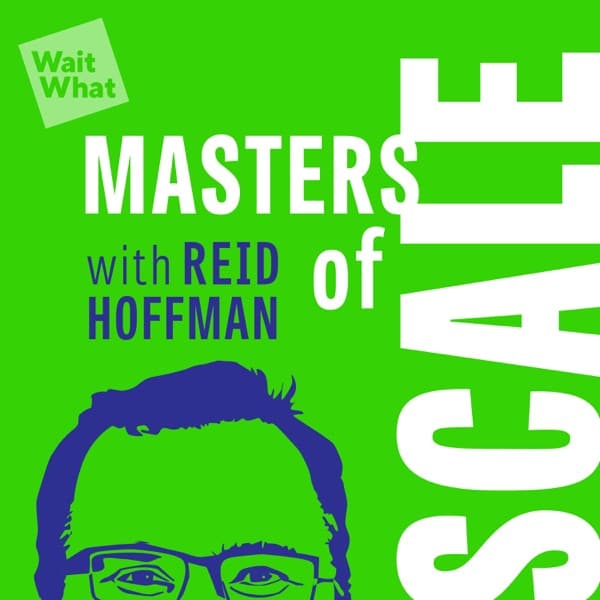 Masters of Scale
Masters of Scale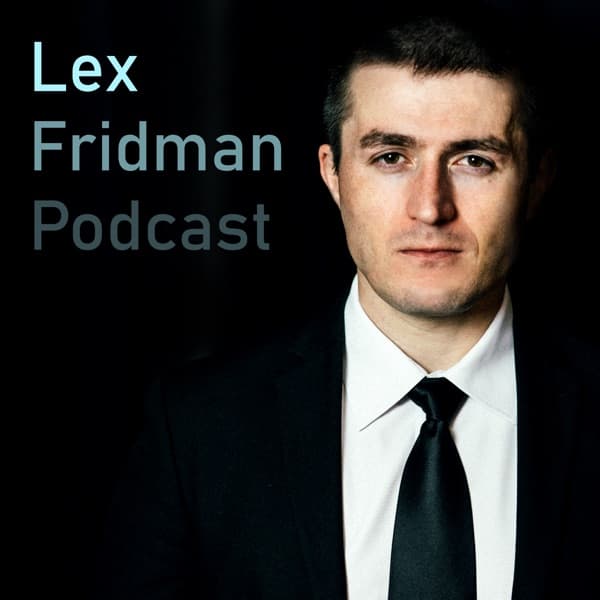 Lex Fridman Podcast
Lex Fridman Podcast All-In with Chamath, Jason, Sacks & Friedberg
All-In with Chamath, Jason, Sacks & Friedberg Modern Wisdom
Modern Wisdom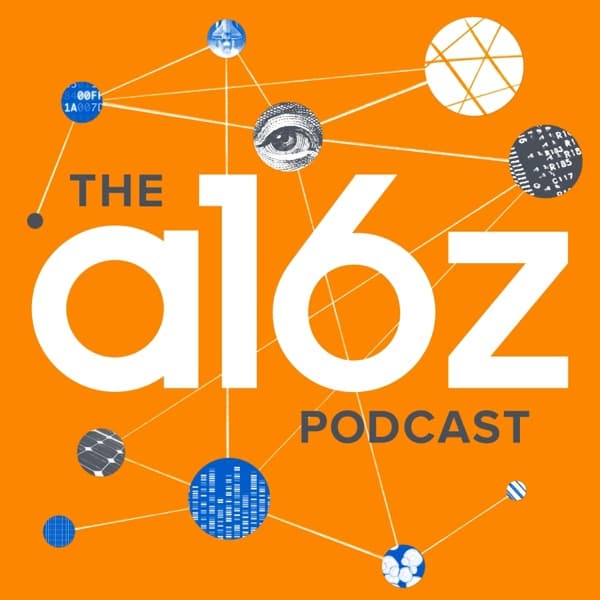 a16z Podcast
a16z Podcast Lenny's Podcast: Product | Growth | Career
Lenny's Podcast: Product | Growth | Career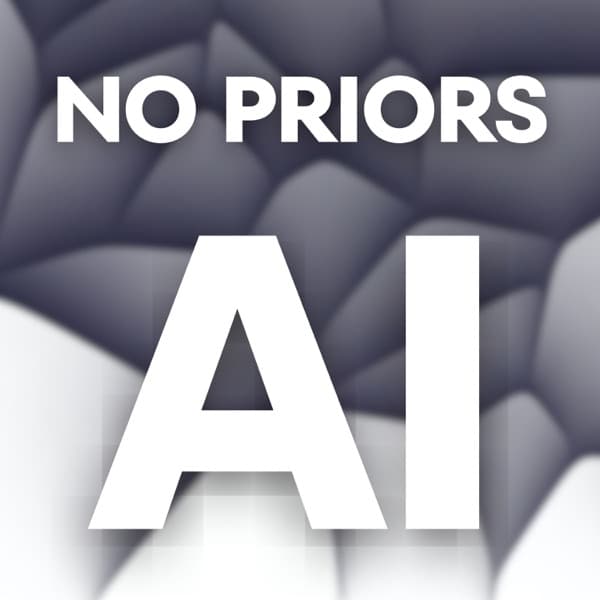 No Priors AI
No Priors AI The Twenty Minute VC (20VC): Venture Capital | Startup Funding | The Pitch
The Twenty Minute VC (20VC): Venture Capital | Startup Funding | The Pitch How I Built This with Guy Raz
How I Built This with Guy Raz BG2Pod with Brad Gerstner and Bill Gurley
BG2Pod with Brad Gerstner and Bill Gurley TechCrunch Startup News
TechCrunch Startup News Y Combinator Startup Podcast
Y Combinator Startup Podcast